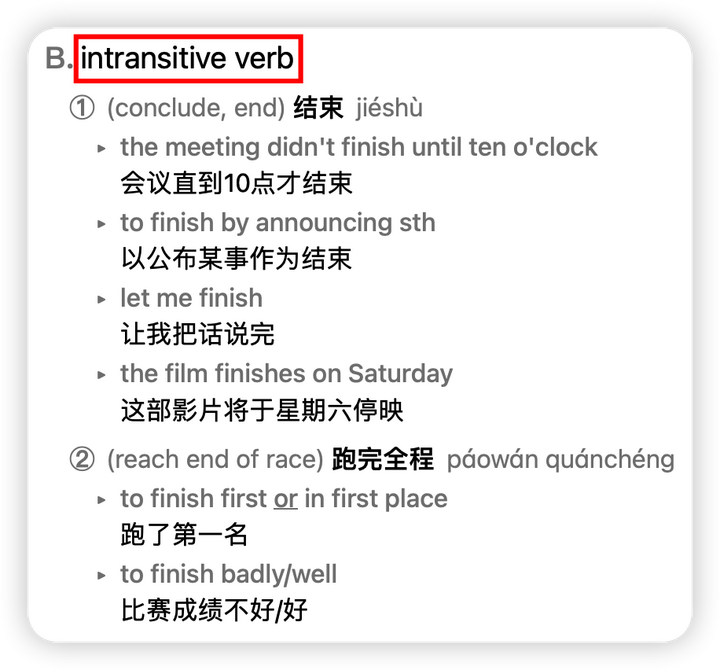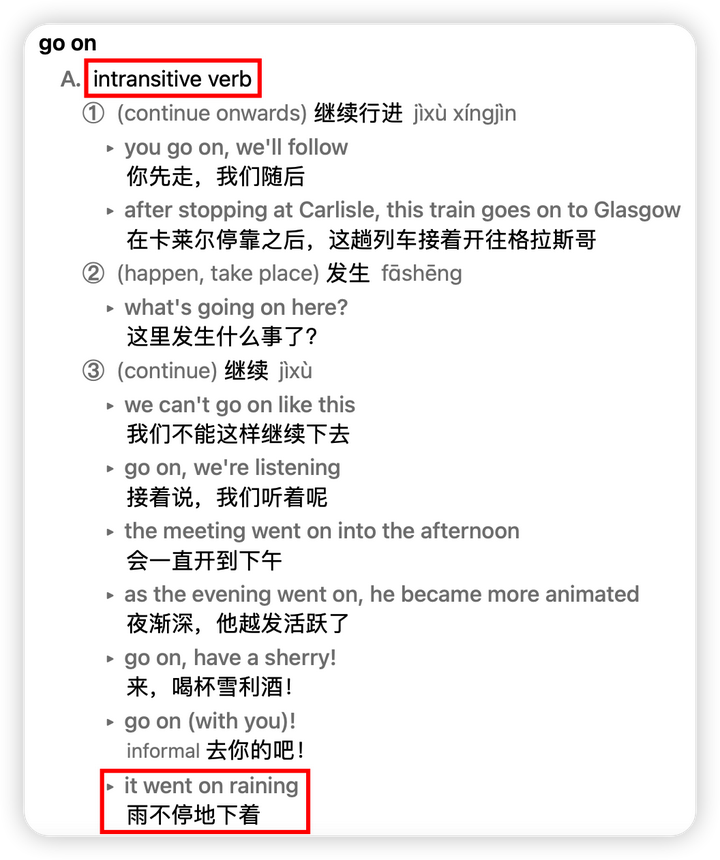① 现在分词 doing,来源于进行时态 be doing,所以现在分词 doing 必然表示正在进行。比如:
I'm writing this answer.
我在写这个回答。
重点来了:所谓正在进行,其实也就暗含了一层尚未完成的意思。比如上例子中的 writing this answer 表示「正在写这个回答」,那也就说明我还没有写完这个回答。
② 动名词 doing,来源于动词本身,所以动名词 doing 就表示这个动词表示的动作本身。比如:
I love cooking.
我爱下厨。
很显然,我爱的是「下厨」这件事情。
重点来了:动名词 doing 表示的是一般性概念,没有时间属性。比如上例中的 cooking 表示的「下厨」这件事情,昨天喜欢,今天喜欢,不出意外明天也会喜欢。
二、「v + to do/ doing」各种组合
与本题相关,可以根据语义把动词分为两类:
⚈ 暗含将来性的动词,记为「v➤」。比如 plan to do sth.的 plan「计划」显然表示计划将来要做的事。
⚈ 不含将来性的动词,记为「v⊙」。比如 mind doing sth.的 mind「介意」只是表示介意做这件事情本身,过去介意,现在介意,将来也介意,所以并不特别表示将来性。
然后,就可以排列组合「v + to do/ doing」的各种情况了。
1、「v➤ to do」「v➤ sb to do」表将来
这种往往都存在明确的时间先后关系,v 在前,to do 在后,示意图如下:

具体来说,又可细分为「v to do」和「v sb to do」两类,但都表示将来。
⚈ v➤ to do
afford to do sth 负担得起做某事
agree to do sth 同意做某事
arrange to do sth 安排做某事
ask to do sth 要求做某事
beg to do sth 请求做某事
care to do sth 想要做某事
choose to do sth 决定做某事
decide to do sth 决定做某事
demand to do sth 要求做某事
determine to do sth 决心做某事
expect to do sth 期待做某事
fail to do sth 未能做某事
fear to do sth 害怕做某事
help to do sth 帮助做某事
hope to do sth 希望做某事
learn to do sth 学习做某事
manage to do sth 设法做某事
offer to do sth 主动提出做某事
plan to do sth 计划做某事
prepare to do sth 准备做某事
pretend to do sth 假装做某事
promise to do sth 答应做某事

refuse to do sth 拒绝做某事
want to do sth 想要做某事
wish to do sth 希望做某事
————————————
aim to do sth 打算做某事
go on to do sth 做完某事后接着做另一事
happen to do sth 碰巧做某事
hesitate to do sth 犹豫做某事
long to do sth 渴望做某事
struggle to do sth 努力做某事
⚈ v➤ sb to do
advise sb to do sth 建议某人做某事
allow sb to do sth 允许某人做某事
ask sb to do sth 请(叫)某人做某事
bear sb to do sth 忍受某人做某事
beg sb to do sth 请求某人做某事
bring sb to do sth 促使某人做某事
cause sb to do sth 导致某人做某事
command sb to do sth 命令某人做某事
drive sb to do sth 驱使某人做某事
elect sb to do sth 选举某人做某事
encourage sb to do sth 鼓励某人做某事
expect sb to do sth 期望某人做某事
forbid sb to do sth 禁止某人做某事
force sb to do sth 强迫某人做某事
get sb to do sth 使(要)某人做某事
hate sb to do s 什 i 讨厌某人做某事
help sb to do sth 帮助某人做某事
intend sb to do sth 打算要某人做某事
invite sb to do sth 邀请某人做某事
leave sb to do sth 留下某人做某事
like sb to do sth 喜欢某人做某事
mean sb to do sth 打算要某人做某事
need sb to do sth 需要某人做某事
oblige sb to do sth 迫使某人做某事
order sb to do sth 命令某人做某事
permit sb to do sth 允许某人做某事
persuade sb to do sth 说服某人做某事
prefer sb to do sth 宁愿某人做某事
request sb to do sth 要求某人做某事

remind sb to do sth 提醒某人做某事
teach sb to do sth 教某人做某事
tell sb to do sth 告诉某人做某事
train sb to do sth 训练某人做某事
trouble sb to do sth 麻烦某人做某事
want sb to do sth 想要某人做某事
warn sb to do sth 警告某人做某事
wish sb to do sth 希望某人做某事
其中,如果及物动词 v➤是使役动词,to do 省略 to
have sb do sth 使某人做某事
let sb do sth 让某人做某事
make sb do sth 使某人做某事
2、「v⊙ + doing」表概念
动名词 doing 表概念,笼统而言没有时间属性,即过去如此,现在如此,将来还如此,示意图如下:

比如 dislike doing sth 不喜欢做某事,自然是过去不喜欢,现在不喜欢,将来也不喜欢。
avoid doing sth 避免做某事
delay doing sth 推迟做某事
dislike doing sth 不喜欢做某事
enjoy doing sth 喜爰做某事
escape doing sth 逃脱做某事
forbid doing sth 禁止做某事
give up doing sth 放弃做某事
keep doing sth 保持做某事
mention doing sth 提及做某事
mind doing sth 介意做某事
miss doing sth 错过做某事
practice doing sth 练习做某事
prevent doing sth 阻止做某事
put off doing sth 推迟做某事
risk doing sth 冒险做某事
understand doing sth 理解做某事
虽然动名词 doing 笼统而言没有时间属性,但是很多动词本身有指向性,所以动名词 doing 与其组合也可能指向过去或将来——但是 doing 本身仍然表示的是概念,只是被动词限缩了适用时间,所以笼统归于「v⊙ + doing」表概念一类。
⚈「v + doing」表过去
有些动词的词义要求接过去的事情,比如 admit doing sth 承认做某事,自然只能表示承认过去做了某事,否则语义就不通。

admit doing sth 承认做某事
appreciate doing sth 感激做某事
deny doing sth 否认做某事
excuse doing sth 原谅做某事

finish doing sth 完成做某事
forgive doing sth 原谅做某事
pardon doing sth 原谅做某事
report doing sth 报告做某事
stop doing sth 停止做某事
⚈「v + doing」表将来
反之,也有一些动词的词义要求后接表将来的内容,比如 consider doing sth 考虑做某事,在考虑的时候,doing 的事情自然还是没有做的。

allow doing sth 允许做某事
consider doing sth 考虑做某事
discuss doing sth 讨论做某事
suggest doing sth 建议做某事
imagine doing sth 想象做某事
permit doing sth 允许做某事
prohibit doing sth 禁止做某事
3、「v⊙ sb to do」表完整过程
这种往往是感官东西 + sb. + 省略 to 的不定式,所以实际看起来是「v⊙ sb do」。虽然后接省略 to 的不定式,但是这一类动词并不包含将来性,而是 v⊙。从时间关系上来说动词加名词是什么短语,v⊙和 (to) do 同步发生,(to) do 进行多久,v⊙就进行多久,示意图如下:

feel sb do sth 感觉某人做某事
hear sb do sth 听见某人做某事
listen to sb do sth 听着某人做某事
look at sb do sth 看着某人做某事
notice sb do sth 注意某人做某事
observe sb do sth 观察某人做某事
see sb do sth 看见某人做某事
watch sb do sth 观察某人做某事
4、「v⊙ sb doing」表正在进行
现在分词 doing 天然表示正在进行,在「v⊙ sb doing」中 v⊙与 sb doing 同步发生动词加名词是什么短语,示意图如下:

catch sb doing sth 碰上(撞上)某人做某事
discover sb doing sth 发现某人做某事
feel sb doing sth 感觉某人做某事
find sb doing sth 碰上(撞上)某人做某事
get sb doing sth 使某人做某事
have sb doing sth 使某人做某事
hear sb doing sth 听见某人做某事
keep sb doing sth 使某人不停地做某事
listen to sb doing sth 听某人做某事
look at sb doing sth 看着某人做某事
notice sb doing sth 注意到某人做某事

observe sb doing sth 观察某人做某事
prevent sb doing sth 阻止某人做某事
see sb doing sth 看见某人做某事
send sb doing sth 使某人(突然)做某事
set sb doing sth 使(引起)某人做某事
start sb doing sth 使某人开始做某事
stop sb doing sth 阻止某人做某事
watch sb doing sth 观察某人做某事
三、易混情况
由上述分析及例子可见,很多动词只会加 to do 或 doing,但是有些动词两者皆可,此时则存在语义不同和语义基本相同两种情况。
1、同 v + to do/doing 语义不同
细分起来,同 v + to do/doing 语义不同也有两者情况,一种是由动词多义造成的,所以本质上这种情况下的「v + to do」和「v + doing」分别属于上述四类中的某一类。
can’t help to do sth 不能帮助做某事
can't help doing sth 禁不住做某事
mean to do sth 打算做某事
mean doing sth 意味着做某事
try to do sth 设法要做某事
try doing sth 做某事试试看有何效果
另一种则是动词真正同义,但是后接 to do 和后接 doing 整体语义就会不同。
forget to do sth 忘记要做某事
forget doing sth 忘记曾做过某事
regret to do sth 后悔(遗憾)要做某事
regret doing sth 后悔(遗憾)曾做过某事
remember to do sth 记住要做某事
remember doing sth 记住曾做过某事
go on to do sth 做完某事后接着做另一事
go on doing sth 继续做一直在做的事
stop to do sth 停下来(正在做的事转而)去做某事
stop doing sth 停止做某事
2、同 v + to do/doing 语义基本相同
有一些动词,后接 to do 或 doing 语义基本相同,一般不做细致的区分。但是如果要细致区分,还是有一丝丝区别的,仅以 like 为例:
⚈ like doing sth 喜欢做某事(本身)
⚈ like to do sth 喜欢 / 愿意(将来)去做某事
如果将 like 稍微改动为 would like,后面就只能接 to do,表示愿意(将来)去做某事。只是在实际使用中,如果一个人说 like doing sth 喜欢做某事,大概率也就是接下来要去做这件事情,所以可以视为两者同义。
like to do sth / like doing sth 喜欢做某事
love to do sth / love doing sth 喜欢做某事
hate to do sth / hate doing sth 憎恨做某事
prefer to do sth / prefer doing sth 宁可做某事
begin to do sth / begin doing sth 开始做某事
start to do sth / start doing sth 开始做某事

continue to do sth / continue doing sth 继续做某事
can’t bear to do sth / can’t bear doing sth 不能忍受做某事
bother to do sth / bother doing sth 麻烦做某事
intend to do sth / intend doing sth 想要做某事
attempt to do sth / attempt doing sth 试图做某事
cease to do sth / cease doing sth 停止做某事
四、语法分析
上面主要是从语义的角度进行分析的,如果要用语法的角度,则需要区分动词 v 是否及物,区分 to do、doing 分别做什么语法成分。
1、「vt + 宾语 to do」「vi + 补语 to do」「vi + 状语 to do」
根据动词 v 是否及物,「v + to do」分为「vt + 宾语 to do」「vi + 补语 to do」「vi + 补语 to do」三种情况。比如:
⚈「vt + 宾语 to do」:afford to do sth 负担得起做某事
⚈「vi + 补语 to do」:aim to do sth 打算做某事
⚈「vi + 状语 to do」:stop to do sth 停下来(正在做的事转而)去做某事
上面「v + to do」的例子中,两种情况以分割线分隔。
2、「vt + 宾语 doing」「vi + 补语 doing」
「v + doing」的情况绝大多数都是「vt + 宾语 doing」,比如:
admit doing sth 承认做某事
但是,也有少数例子用这一结构无法解释,比如:
go on doing
不论是 go 还是 go on 都不是及物动词,所以 doing 不可能是 go on 的宾语,一般倾向于解释为「vi + 补语 doing」——当然这种例子非常少。
3、「vt 宾语 sb 补语 to do/doing」
这两种情况,动词必然是及物的,sb 必然是宾语,后面的 to do、doing 必然是宾语补语。比如:
advise sb to do sth 建议某人做某事
catch sb doing sth 碰上(撞上)某人做某事
注释
1、目的与将来
所谓 to do 表示将来,如果动作主体是有意识的,也可以说是目的,比如:
We planed to tour around Asia in only two months.
但是如果动作主体是无意识的,就很难说是目的:
Run! The wall is about to fall.
所以说,「目的必将来,将来未必目的」。
2、vi + 状语 / 补语
从语法上需要说明:上面有一些动词是不及物动词 vi,后面的 to do 或 doing 是状语或补语。这里的 to do 和 doing 是状语还是补语可能有争议,我的理解如下。
状语比如:
不及物动词 stop [状语 to do sth] 对比:及物动词 stop {宾语 动名词 doing}
由此引申,finish to do sth 理论上并非不可能,因为 finish 做不及物动词也可以表示「结束」的意思:

假设如下语境,我觉得 finish to do sth 也是可以的,比如:
We had a long meeting tonight, and we didn't finish to have a bite until midnight. 我们开了一晚上的会,直到半夜才停下来,去吃了点东西。
补语也是有的:
不及物动词词组 go on

